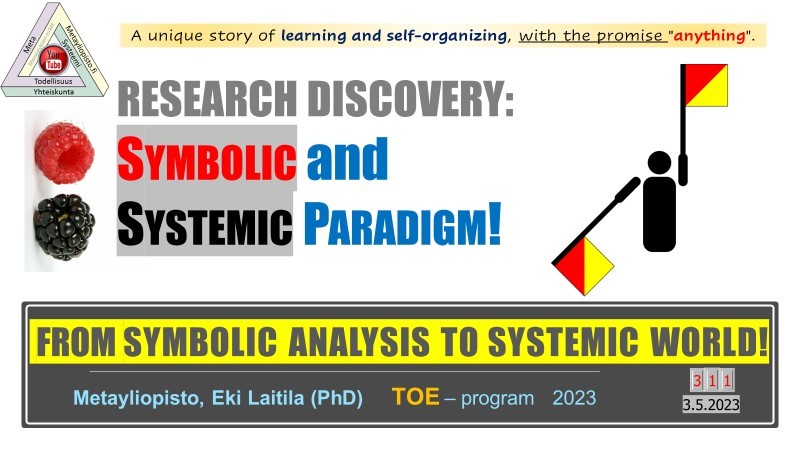A unique story of learning and self-organizing, with the promise “anything“.
The unique story can be read as PDF and as VIDEO, and as text below.

The two paradigms
Symbolic approach
•Before my 10 year work and study (1999), I knew the basic meaning of the symbol, but symbol was just a word among other words.
•While researching programming languages at my startup company, I discovered the grammar technology, GrammarWare. According to it, language consists only of symbols. Through this, the research goal of source code analysis, traditionally known as algorithmic work, began to resemble in my mind a tuple of semantics, semiotics and pragmatics. The basic meaning of the symbol began to emerge in my mind as conceptual spaces, ranging from Turing’s machine metaphor to Jung’s dream theories. Symbolism comes out in countless different ways in every person, even if we don’t necessarily notice it.
Systemic approach
•Before my discovery (2008-2023), I knew the basic meaning of the system, but system was just a word among other words.
•The concept of system came to my mind in connection with the goals of problem solving. That is why I found systems thinking and cybernetics and finally the extremely broad area of research, systemology: development and influence models that cover the whole world. And that’s not enough, metascience was found as a new vision of what science should be, Science 2.0. I have already written ten books on these topics.
•Nowadays, politicians talk about climate change from their own perspectives, focusing mainly on carbon dioxide, as a problem. However, the earth is a closed system that should be seen as a whole, the system with its all perspectives. That absolutely requires a wider research method that goes by the name of Earth Systems Science.
More information here:
Computer science (94) A.GrammarWare (13) B.Hardware ontology (2) C.KnowledgeWare (19) D.MaintenanceWare (9) E.ModelWare (27) F.SimulationWare (21) G.Software ontology (8) H.Transformation Framework (6)

